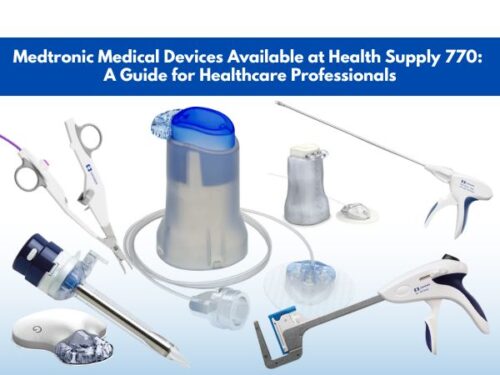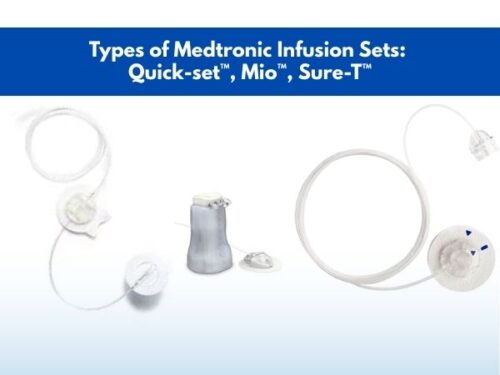What is a Trach Tube used for?

In patients with severe respiratory blockade due to pneumonia, throat cancer, tracheal infections, or any other disease state, assistance is required in supplying oxygen to the lungs. Moreover, there may be a need to clear the tracheal fluids out of the body which the patient is unable to do by herself/himself. In such cases, the use of tracheostomy tubes, or as they are frequently called, the trach tubes becomes a need of the hour.
Trach or tracheostomy tubes are employed to facilitate the breathing process in patients who are experiencing a blockage in the airway passage or a reduction in the airflow inside the lungs. These are placed into the air passageway by performing a surgical procedure. In most cases, the trach tubes are temporary assistance which is used by the patients until they recover from a disease. However, in some cases, a tracheostomy tube is needed permanently.

A tracheostomy or trach tube inserted into a patient’s airway passage
Structure of a tracheostomy tube
A tracheostomy tube has multiple parts with varying functions:
Connector: A connector is a piece that connects the cannulas with the shaft.
Flange: The flange, also called the faceplate or the neck plate, is the extended side region of the trach tube which helps in keeping the tube in place. It has tape holes or attachments which are the regions where the clothing ties or Velcro straps can be put.
Inner cannula: The inner cannula is a structure that is encapsulated by the outer cannula. A lock attached to this part helps its retention in the trachea. However, it needs to be replaced after every 7 to 14 days.

A tracheostomy tube with its parts labeled
Outer cannula: It helps in keeping the trach tube open.
Obturator/Trocar: It is the region that facilitates the insertion of the trach tube into the incised opening into the trachea by guiding its way in.
Cuff: A cuff is a balloon-like structure placed at the end of the tracheostomy tube. It helps in the retention of the tube inside the airway passage. A trach tube can be cuffed or uncuffed.

The parts of a trach tube
Types of tracheostomy tubes
The trach tubes are of the following types:
- Cuffed tracheostomy tubes
- Uncuffed tracheostomy tubes
- Tracheostomy tubes with disposable inner cannulas (cuffed/uncuffed)
- Tracheostomy tubes with reusable inner cannulas (cuffed/uncuffed)
- Tracheostomy tubes with extended lengths
- Fenestrated tracheostomy tubes (cuffed/uncuffed)
- Metal tracheostomy tubes
Materials used to prepare tracheostomy tubes
The tracheostomy tubes are made of the following materials:
- Silver
- Stainless steel
- Polyvinyl chloride (PVC)
- Silicone
- Polyurethane
Although the tubes prepared with silicone and PVC are soft and flexible, the ones prepared with silver or stainless steel are more durable and have the ability to inhibit bacterial growth. Moreover, like silicone-based tubes, metallic tracheostomy tubes can also be sterilized.
Sizes and dimensions of tracheostomy tubes
The tracheostomy tubes or simply trach tubes are of the following sizes:
| Jackson size | Inner diameter (mm) | Outer diameter (mm) | |
| With inner cannula | Without inner cannula | ||
| 4 | 5.0 | 6.7 | 9.4 |
| 6 | 6.4 | 8.1 | 10.8 |
| 8 | 7.6 | 9.1 | 12.2 |
| 10 | 8.9 | 10.7 | 13.8 |

Dimensions of the tracheostomy tube mentioned on it
Generally, a tube with a 10 mm outer diameter is preferred for the female patient while for male ones, a trach tube with an outer diameter of 11 mm is the most suitable option.
When a tracheostomy tube is needed?
A tracheostomy tube is required by the patients in the following conditions:
- Obstructed airways i.e. nose, mouth, and throat blockade
- Difficulty in breathing
- Difficulty in swallowing
- Injury to the lungs, trachea, or larynx
- Infection in the lungs
- Inflammation of the respiratory tract
- Surgical reconstruction of the larynx (voice box/sound box) or pharynx (throat)
Placement of a tracheostomy tube
For the placement of a tracheostomy tube, an opening is created into the neck region just below Adam’s apple in order to reach the trachea. Once the hole is made wide enough to fit the tracheostomy tube, the physician places the tube inside the tracheotomy i.e. the incision in the patient’s windpipe. After placement, a band is applied to the tube to secure its place. Moreover, the tracheostomy tube can be connected to an oxygen cylinder or a breathing machine (ventilator). Prior to this procedure, the patient is given general anesthesia. The patient can eat with a tracheostomy tube on but it may cause pain while swallowing. A tracheostomy tube should be replaced every 7 to 14 days.

Tracheostomy tube inserted into a patient’s air passageway: (A) properly placed trach tube while (B) and (C) represent the improper placement of the tracheostomy tube
Applications of tracheostomy tubes
The tracheostomy tubes have the following applications in the medical field:
- They are employed to provide positive-pressure ventilation.
- These trach tubes are also responsible for providing a patent airway in patients who are prone to experiencing air passageway obstruction.
- They also find application in accessing the lower respiratory tract with the aim to give airway clearance.
- The tracheostomy tubes can also help in the clearance of the fluid or mucus trapped in the respiratory pipes in cases when the patient is unable to cough them out due to muscular weakness, severe pain, or paralysis. Similar assistance is required if the patient is affected by pneumonia.
Side effects of tracheostomy tubes
The following side effects can occur with the use of a tracheostomy tube:
- If malpositioned, a tracheostomy tube can cause bleeding or injury in the tracheal tissue.
- The tracheostomy tubes, if not properly sterilized before administration, can transfer an infection into the patient’s respiratory tract.
Conclusion
The necessity to artificially supply oxygen to patients with lung diseases such as pneumonia etc. is a common situation endured by the medical staff on daily basis. To resolve the issue, the trach or tracheostomy tubes are frequently used. Although surgical fixing is required to put them into the trachea, their efficiency and durability exceed this difficulty thus making them a dominant medical device.



















